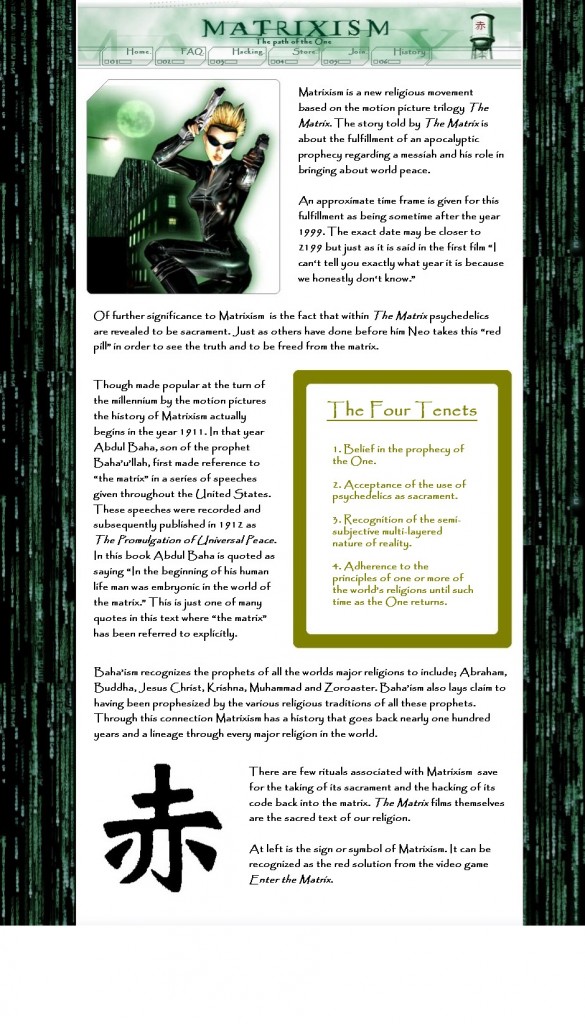 I recently heard from Adam Possamai, editor of the Handbook of Hyper-Real Spiritualities (Brill, forthcoming), that my essay on Matrixism was accepted. It is titled “’A world without rules and controls, without borders or boundaries’: Matrixism, New Mythologies, and Symbolic Pilgrimages.”
I recently heard from Adam Possamai, editor of the Handbook of Hyper-Real Spiritualities (Brill, forthcoming), that my essay on Matrixism was accepted. It is titled “’A world without rules and controls, without borders or boundaries’: Matrixism, New Mythologies, and Symbolic Pilgrimages.”
I am privileged to be a part of a number of top-notch contributors on new and minority religions, and hyper-real spiritualities (or fiction-based religions), those religions that draw upon aspects of the fantastic in popular culture. Other topics include chapters on things like Jediism, vampirism, Heaven’s Gate, Satanism, Otherkin, and the Raelian Movement.
A summary of my essay in this volume:
In this essay I draw upon the proposal of Irving Hexham and Karla Poewe regarding the significance of myth in understanding new religions, coupled with the work of other scholars who suggest that science fiction is an especially significant source of mythic inspiration for our time. Then I consider how science fiction mythic narratives provide new religions like Matrixism with the imaginative tools necessary to engage in practices similar to more traditional religions. By drawing upon Jennifer Porter’s exploration of fan participation at Star Trek conventions as a form of pilgrimage in fulfillment of an embodied ideal, combined with the thesis of Roger Aden on participation in imaginative narratives of alternative worlds that allow adherents to transcend and critique the habitus of daily life as well as grand narratives of culture, I suggest that the symbolic pilgrimage of Matrixism parallels pilgrimage as found in more traditional religions, yet also differs in that they take place primarily in the realm of the sacred imagination.
Related posts:
“Adam Possamai: Jediism, Matrixism, and Hyper-Real Spiritualities”
“The Otherkin, Fantastic Texts, Pop Culture, and Neo-Religiosity”
“Star Trek Conventions as Sacred Pilgrimage”
“Understanding the Appeal of the Fantastic: Escape From the Habitus to Promised Lands”





There are no responses yet